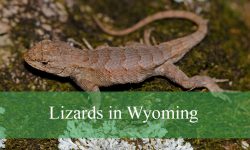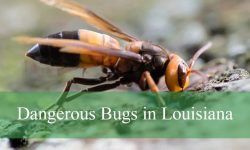Swans are among the most graceful and majestic waterfowl, often admired for their elegance and serene presence. Their striking white plumage and long, curved necks make them a symbol of beauty and tranquility in many cultures. Observing these birds in the wild is a truly captivating experience.
In Louisiana, swans can be found across a variety of wetlands, lakes, and rivers. These habitats provide the ideal environment for feeding, nesting, and resting during migration. Birdwatchers often seek out these locations to catch a glimpse of these stunning waterfowl in their natural surroundings.
Three primary species of swans inhabit the state: the Mute Swan, the Trumpeter Swan, and the Tundra Swan. Each species has unique characteristics, behaviors, and habitat preferences. Understanding these differences not only enhances the birdwatching experience but also supports efforts to protect and conserve these magnificent birds.
Mute Swan (Cygnus olor)

Identification and Physical Characteristics
The Mute Swan is one of the most striking and easily recognizable swan species in the world. Its pure white plumage glistens in sunlight, creating an elegant and serene appearance on lakes and rivers. The long, slender neck curves gracefully, enhancing its majestic silhouette.
A key identifying feature is the bright orange bill with a black knob at the base, which is especially prominent in adult males, known as cobs. Their large, broad wings, spanning 2.4 to 2.7 meters, make them impressive in flight. Even from a distance, their size and graceful movements make them unmistakable, whether swimming, feeding, or soaring above wetlands.
Habitat and Distribution in Louisiana
Mute Swans are native to Europe and parts of Asia, but they were introduced to North America in the 19th century for ornamental purposes. Over time, some escaped captivity or were released, forming wild populations.
In Louisiana, Mute Swans are primarily found in the southeastern regions. Urban parks, lakes, and large ponds provide ideal conditions for breeding and nesting. Their adaptability allows them to thrive in both human-influenced areas and natural aquatic environments, ranging from calm lakeshores to slow-moving rivers.
Behavior and Ecology
Mute Swans are highly territorial, especially during the breeding season. They defend nesting sites vigorously, sometimes even against larger waterfowl. Unlike other swan species, they are relatively quiet, producing soft hissing or grunting sounds instead of loud trumpeting calls. This quieter nature is why they are called “mute,” though they are not completely silent.
These swans are primarily herbivorous, feeding on submerged aquatic plants, algae, and occasionally small invertebrates. They are often seen gliding gracefully across calm waters while dipping their necks to forage. Mute Swans also form strong family groups, with cygnets staying with parents for protection and guidance during their first year.
Conservation Status and Ecological Impact
While Mute Swans are not endangered, their invasive status in North America has raised ecological concerns. In Louisiana, they can outcompete native waterfowl for food and nesting sites. Their feeding habits may also affect aquatic vegetation, altering wetland ecosystems.
Conservationists continue to monitor their populations and impacts. Management strategies focus on controlling their numbers in sensitive habitats to protect native species while still allowing people to enjoy their beauty in parks and lakes.
Trumpeter Swan (Cygnus buccinator)

Identification and Physical Characteristics
The Trumpeter Swan is the largest native waterfowl in North America and is renowned for its imposing size and striking appearance. Adults typically measure up to 1.8 meters in length and can weigh between 7 to 13.6 kilograms. Their plumage is entirely white, creating a stunning contrast against Louisiana’s wetlands and lakes.
One of the most distinctive features of the Trumpeter Swan is its long, straight neck paired with a solid black bill. Unlike the Mute Swan, it lacks the orange coloring and knob, giving it a more streamlined look. Its name comes from the loud, trumpet-like calls it produces, which can carry over long distances and are often a key way to identify them in the wild.
Habitat and Distribution in Louisiana
Historically, Trumpeter Swans were nearly driven to extinction due to overhunting and habitat loss. Conservation efforts over the past century have helped their populations rebound.
In Louisiana, Trumpeter Swan sightings are less common than Mute Swans, but they have been increasingly observed in northern and central regions. They prefer large, undisturbed wetlands, lakes, and slow-flowing rivers where food and nesting sites are abundant. Their occasional presence in urban-adjacent wetlands highlights their growing adaptability and the success of conservation programs in restoring suitable habitats.
Behavior and Ecology
Trumpeter Swans are highly social and often form tight family groups, especially during the breeding season. Adults are protective of their cygnets and maintain strong pair bonds, sometimes for life.
These swans are herbivorous, feeding primarily on aquatic plants, tubers, and occasionally small insects. Unlike the quieter Mute Swan, Trumpeter Swans are vocal, using their powerful, bugle-like calls to communicate with mates, cygnets, and other swans. They are migratory birds, traveling to warmer regions during winter and returning north in the spring, which makes Louisiana an important stopover location during migration.
Conservation Status and Efforts
Today, the Trumpeter Swan is classified as a species of least concern, thanks to extensive conservation initiatives. Efforts have included habitat restoration, breeding programs, and legal protection against hunting.
In Louisiana, their increasing numbers are a positive sign of ecological recovery. Ongoing monitoring ensures that habitats remain suitable and that swans can coexist with other native species. Protecting wetlands, controlling pollution, and maintaining safe migratory routes are key factors in supporting their continued recovery.
Tundra Swan (Cygnus columbianus)

Identification and Physical Characteristics
The Tundra Swan is a medium-sized swan with entirely white plumage, giving it a clean and elegant appearance. Compared to the Mute and Trumpeter Swans, it has a relatively shorter neck, but its streamlined body makes it a graceful flier and swimmer.
A distinctive feature of the Tundra Swan is its black bill, which often includes a small yellow patch near the base, more noticeable in males. Unlike the Trumpeter Swan’s deep, resonant calls, Tundra Swans produce high-pitched, whistling sounds that are characteristic of their migratory behavior. These vocalizations help swans communicate across large flocks during long flights.
Habitat and Distribution in Louisiana
Tundra Swans are migratory birds that breed in the Arctic regions of North America. During their seasonal movements, Louisiana serves as an important stopover and wintering ground, especially in central and northern parts of the state.
They favor shallow wetlands, lakes, and slow-moving rivers where aquatic vegetation is abundant. These habitats allow them to rest, feed, and refuel before continuing their long journeys. Their presence in Louisiana is typically seasonal, with peak sightings occurring during the fall and spring migrations.
Behavior and Ecology
Tundra Swans are highly social and are often seen in large flocks during migration. They feed primarily on aquatic plants, occasionally dabbling in grasses near shorelines. Their feeding behavior plays an important role in maintaining wetland health by promoting plant growth and nutrient cycling.
Migration is a defining aspect of their ecology. Tundra Swans travel thousands of kilometers between their Arctic breeding grounds and southern wintering habitats, relying on stopover locations like Louisiana to sustain their energy levels. Their high-pitched calls are commonly heard during flight and while gathering in groups, serving as both communication and coordination signals within flocks.
Conservation Status
The Tundra Swan is currently listed as a species of least concern, reflecting stable population trends across North America. However, ongoing monitoring is essential, as changes in wetland availability or quality could affect their migratory success.
In Louisiana, protecting suitable stopover and wintering habitats is crucial for their continued survival. Conservation efforts focus on preserving wetlands, preventing pollution, and maintaining open water areas to ensure that Tundra Swans have safe and abundant feeding grounds during their seasonal migrations.
Comparison of Swans in Louisiana
To help birdwatchers and nature enthusiasts easily distinguish between the Mute Swan, Trumpeter Swan, and Tundra Swan, the following table summarizes their key characteristics, habitats, and behaviors:
Feature |
Mute Swan (Cygnus olor) |
Trumpeter Swan (Cygnus buccinator) |
Tundra Swan (Cygnus columbianus) |
|---|---|---|---|
Size |
Large; 2.4–2.7 m wingspan |
Largest North American swan; 1.8 m length, 2.4–3 m wingspan |
Medium-sized; slightly smaller than Trumpeter Swan |
Plumage |
Pure white |
Pure white |
Pure white |
Neck Length |
Long and curved |
Long and straight |
Shorter than other swans |
Bill |
Orange with black knob (prominent in males) |
Black, no knob |
Black with small yellow patch near base (male more visible) |
Vocalization |
Quiet; soft hissing/grunting |
Loud trumpet-like calls |
High-pitched whistling calls |
Habitat in Louisiana |
Southeastern urban parks, lakes, ponds |
Northern and central wetlands, lakes, rivers |
Central and northern wetlands during migration |
Diet |
Aquatic plants, algae |
Aquatic plants, tubers, some insects |
Aquatic plants, grasses near shorelines |
Behavior |
Territorial, glides gracefully, forms family groups |
Social, strong pair bonds, migratory |
Highly social, migratory, forms large flocks |
Conservation Status |
Not endangered; considered invasive |
Least concern; populations recovering |
Least concern; stable populations |
This comparison table provides a quick reference for identifying swans in Louisiana, highlighting their physical traits, behaviors, and seasonal presence.
Observing Swans in Louisiana
Best Locations for Swan Sightings
Louisiana’s diverse wetland ecosystems create some of the finest opportunities to observe swans in their natural environment. Caddo Lake, located in the northwestern part of the state, features expansive wetlands with calm waters, making it an ideal location for spotting both Mute and Tundra Swans during migration. In the central region, the Red River National Wildlife Refuge provides a rich mix of lakes, ponds, and marshes where migratory swans often pause to feed and rest.
Near New Orleans, Lake Pontchartrain serves as a significant stopover for migratory birds, including various swan species. Its estuarine environment supports abundant aquatic vegetation and safe resting areas, attracting swans as they continue their journeys. Meanwhile, the Atchafalaya Basin, the largest swamp in the United States, offers an extensive wetland network that supports a wide range of waterfowl, including swans. These areas provide ample feeding and resting opportunities, allowing observers to witness the elegant behavior of these birds up close.
Best Times to See Swans
Swans are most commonly observed in Louisiana during their migratory periods. In the fall, from October to November, they travel through the state on their way to wintering grounds further south. During this time, wetlands, lakes, and rivers become temporary habitats where swans rest and feed, giving birdwatchers a chance to observe them in large groups.
Spring migration, occurring from March to April, marks the return journey to breeding grounds in northern regions. Louisiana’s wetlands serve as critical stopover points, providing food and safe spaces for swans to replenish their energy. Observing swans during these periods allows one to witness their social behavior, interactions with other waterfowl, and distinctive flight patterns as they navigate the skies in formation.
Conclusion
Swans are a captivating presence in Louisiana’s wetlands, offering birdwatchers and nature enthusiasts a glimpse into the state’s rich biodiversity. Understanding the characteristics, behaviors, and habitats of the Mute, Trumpeter, and Tundra Swans enhances our appreciation and fosters conservation efforts to protect these magnificent birds. Whether you’re an avid birder or a casual observer, Louisiana’s swans provide a majestic spectacle worth experiencing.
FAQs About Swans in Louisiana
What Are the Main Species of Swans Found in Louisiana?
Louisiana is home to three primary swan species: the Mute Swan, Trumpeter Swan, and Tundra Swan. The Mute Swan is known for its orange bill and black knob, while the Trumpeter Swan is the largest native swan with a black bill and trumpet-like calls. The Tundra Swan, slightly smaller, has a black bill with a yellow patch and is primarily seen during migration periods. Each species has unique behaviors and habitats that make them identifiable to birdwatchers.
When Is the Best Time to Observe Swans in Louisiana?
The optimal times for observing swans are during their migratory periods in fall and spring. From October to November, swans move south to their wintering grounds, often stopping in wetlands and lakes across Louisiana. In spring, between March and April, they return to their breeding habitats, again using Louisiana’s wetlands as stopover sites. Observing swans during these periods increases the chances of seeing large flocks and witnessing natural behaviors such as feeding and social interactions.
Where Are the Best Locations to See Swans in Louisiana?
Swans can be spotted in various wetlands, lakes, and rivers throughout the state. Northwestern Louisiana’s Caddo Lake offers expansive wetlands, while central areas like the Red River National Wildlife Refuge provide ideal stopover habitats. Near New Orleans, Lake Pontchartrain is a key site for migratory birds, and the Atchafalaya Basin, the largest swamp in the U.S., supports abundant waterfowl, including swans. These locations provide rich feeding grounds and safe resting areas for swans during migration.
How Can You Identify Each Swan Species in the Wild?
Identification relies on size, plumage, bill shape, and vocalizations. Mute Swans have an orange bill with a black knob and long, curved necks. Trumpeter Swans are larger, with straight black bills and loud trumpet-like calls. Tundra Swans are medium-sized, have black bills with yellow patches, and produce high-pitched whistling sounds. Observing behaviors such as flight patterns, feeding habits, and social interactions can also help differentiate them.
Are Swans in Louisiana Considered Endangered or Invasive?
Mute Swans are considered invasive in Louisiana and other parts of North America, as they can outcompete native species for resources. Trumpeter and Tundra Swans are listed as species of least concern, with populations stable or recovering thanks to conservation efforts. Protecting wetlands and monitoring swan populations are important to ensure ecological balance while allowing people to enjoy these majestic birds.
What Do Swans Eat in Louisiana Wetlands?
Swans are primarily herbivorous. They feed on submerged aquatic plants, algae, and occasionally small invertebrates. During migration, they often forage in shallow lakes and marshes, consuming vegetation that provides energy for long journeys. Their feeding habits play a key role in wetland ecosystems by maintaining plant diversity and promoting nutrient cycling.
Can Swans Be Observed Year-Round in Louisiana?
While some Mute Swans remain in Louisiana year-round, Trumpeter and Tundra Swans are mostly seasonal visitors. The latter species appear during migration periods in fall and spring. Observing swans outside these times is less common, although some swans may inhabit permanent lakes and ponds in urban or protected areas.






